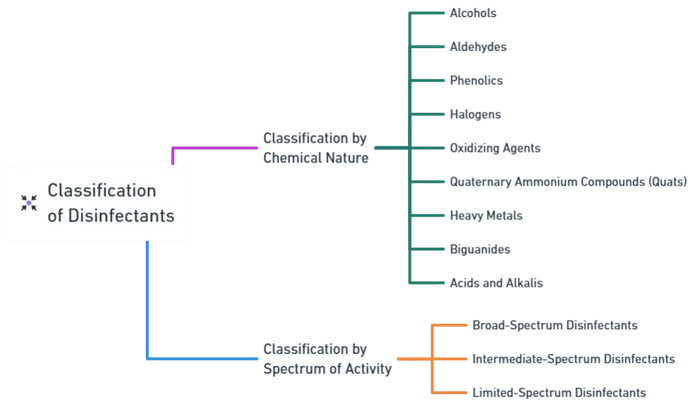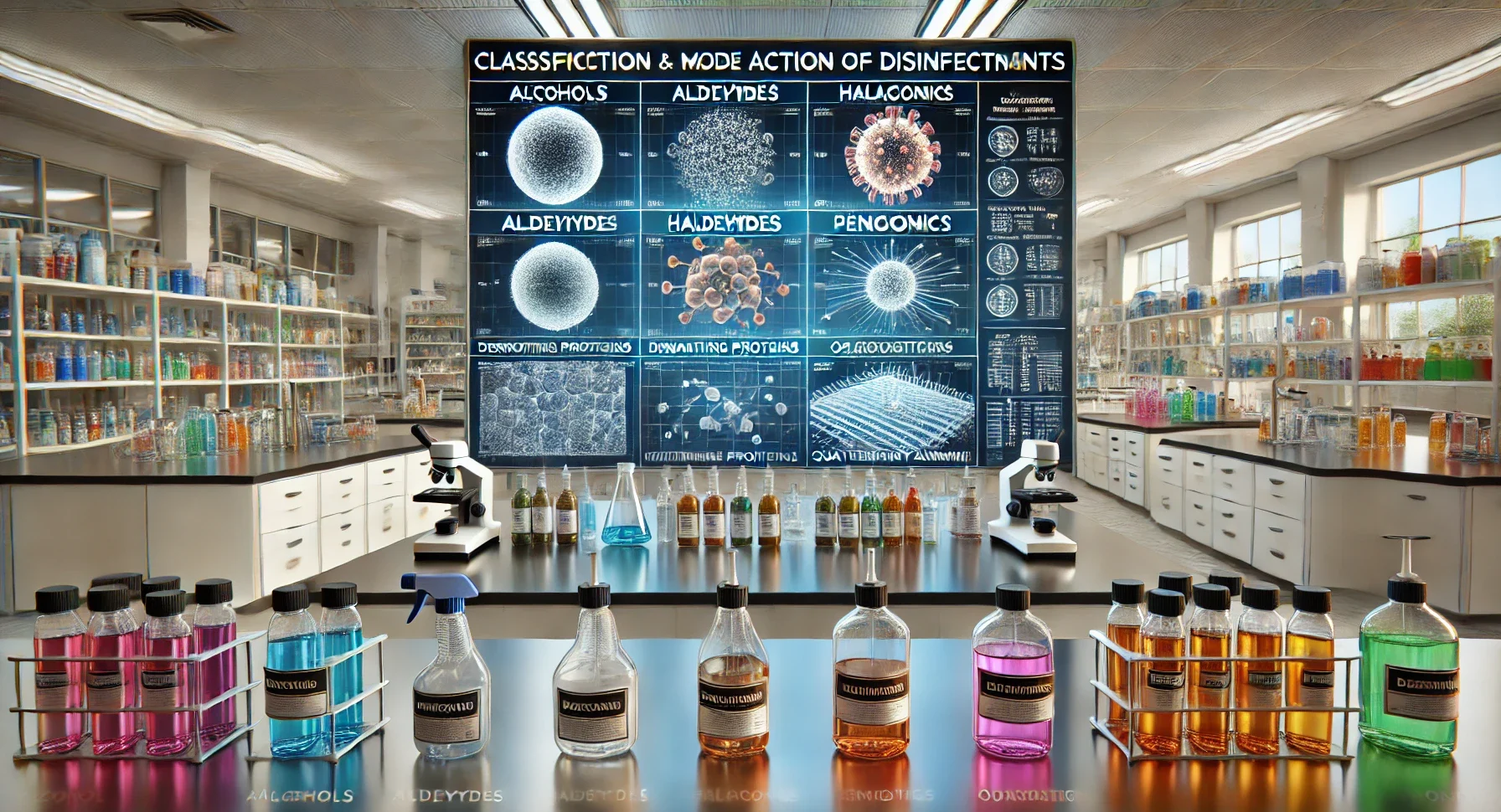- Disinfectants are chemical agents used to eliminate or reduce harmful microorganisms on surfaces and objects.
- They are essential for controlling infections and maintaining hygiene in various settings, including healthcare, laboratories, and public spaces.
- Disinfectants can be classified based on their chemical nature and their mode of action.
Classification by Chemical Nature:

-
Alcohols
- Examples: Ethanol, Isopropanol
- Mode of Action: Denature proteins, disrupt cell membranes.
- Use: Commonly used for skin antiseptics and surface disinfection.
-
Aldehydes
- Examples: Formaldehyde, Glutaraldehyde
- Mode of Action: Cross-linking proteins and nucleic acids, leading to cell death.
- Use: Sterilization of medical equipment and instruments.
-
Phenolics
- Examples: Phenol, Cresols, Chlorhexidine
- Mode of Action: Denature proteins and disrupt cell membranes.
- Use: Disinfecting surfaces, particularly in hospitals and laboratories.
-
Halogens
- Examples: Chlorine, Iodine, Hypochlorites (bleach)
- Mode of Action: Oxidize cellular components, including proteins and nucleic acids.
- Use: Water disinfection, surface cleaning, antiseptic solutions.
-
Oxidizing Agents
- Examples: Hydrogen Peroxide, Peracetic Acid, Ozone
- Mode of Action: Produce free radicals that damage proteins, DNA, and cell membranes.
- Use: Sterilizing medical equipment, disinfecting surfaces, and water treatment.
-
Quaternary Ammonium Compounds (Quats)
- Examples: Benzalkonium Chloride, Cetylpyridinium Chloride
- Mode of Action: Disrupt cell membranes and denature proteins.
- Use: Surface disinfectants, antiseptics, and in some sanitizers.
-
Heavy Metals
- Examples: Silver Nitrate, Mercuric Chloride
- Mode of Action: Bind to proteins and enzymes, inactivating them.
- Use: Limited due to toxicity; used in some topical antiseptics and preservatives.
-
Biguanides
- Examples: Chlorhexidine, Polyhexanide
- Mode of Action: Disrupt cell membranes, leading to leakage of cellular contents.
- Use: Skin antiseptics, disinfectants in medical settings.
-
Acids and Alkalis
- Examples: Acetic Acid, Lactic Acid, Sodium Hydroxide
- Mode of Action: Alter pH, denaturing proteins and disrupting cell membranes.
- Use: Food industry, surface disinfection, and cleaning.
Classification by Spectrum of Activity:
-
Broad-Spectrum Disinfectants
- Effective against bacteria, viruses, fungi, and spores.
- Examples: Bleach (sodium hypochlorite), Glutaraldehyde
-
Intermediate-Spectrum Disinfectants
- Effective against bacteria and enveloped viruses but not non-enveloped viruses or spores.
- Examples: Quaternary ammonium compounds, Alcohols
-
Limited-Spectrum Disinfectants
- Effective mainly against bacteria and some enveloped viruses.
- Examples: Phenolics, some aldehydes

